- MOE
- National Parks of Japan
- Hidakasanmyaku-Erimo-Tokachi National Park
- Characteristics
ここから本文です。
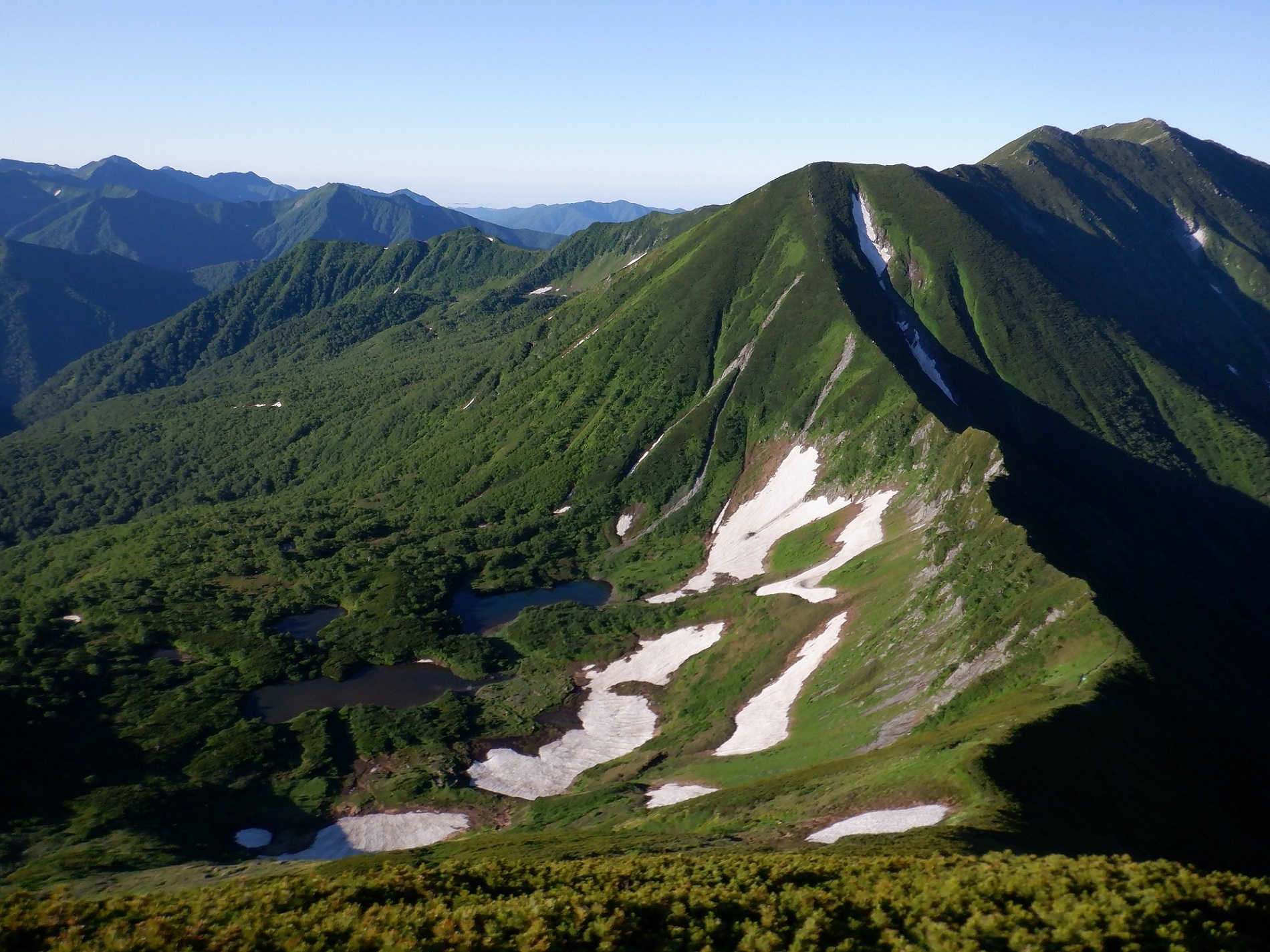
Characteristics
Hidaka mountain range is” The backbone of Hokkaido”
Date of Designation: June 25, 2024
Area : 245,668 ha(land area)
Related Prefecture: Hokkaido
Area : 245,668 ha(land area)
Related Prefecture: Hokkaido
Hidakasanmyaku-Erimo-Tokachi National Park, centered on the Hidaka Mountains which stretch 140 km from north to south, is located in the south-central part of Hokkaido. It is the largest national park in the land area in Japan. The park is home to the highest peak in the Hidaka Mountains, Mt. Poroshiri (2,052 m), and a series of mountains over 1,900 m above sea level, where Japan’s most pristine natural environment remains. The coastal area also has distinctive features such as marine terraces, sea cliffs, and reefs. Cape Erimo, is an example of such feature. Moreover, from the vast Tokachi Plain, visitors can enjoy breathtaking views of majestic mountain scenery.
Terrain
Geological Features
Landscape
The Hidaka Mountains were formed by the collision of continental plates during the Neogene period. During the collision, the crust of the eastern plate was pushed up, exposing geological cross-sections that are originally deep underground. Such locations are rare globally, and around Mount Apoi, you will find fresh, unweathered peridotite rocks showing us deep-Earth information. The ridges of the Hidaka Mountain Range exhibit glacial landforms such as cirques, horns, and arêtes, presenting rugged mountain landscapes. At the foot of the mountains, extensive river-formed alluvial terraces and fan-shaped deposits are formed, while to the east of the range, open terraces and fans continue into the Tokachi Plain, one of the largest in Japan. The majestic Hidaka Mountains, stretching approximately 140 kilometers north to south, remain a remote and challenging mountainous region, embodying the original scenery of the area, yet not easily accessible to humans.
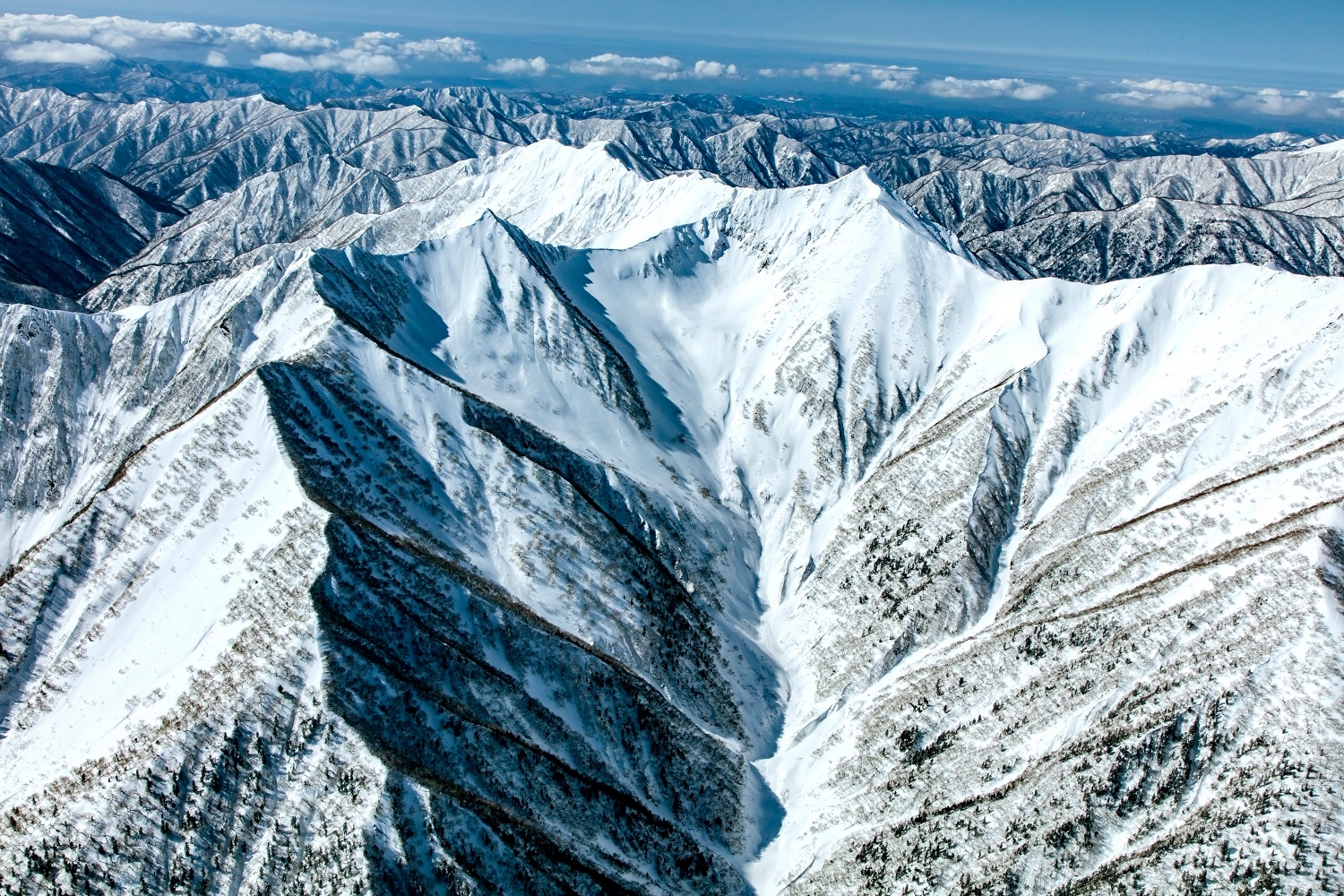
Mt.Kamuiekuuchikaushi
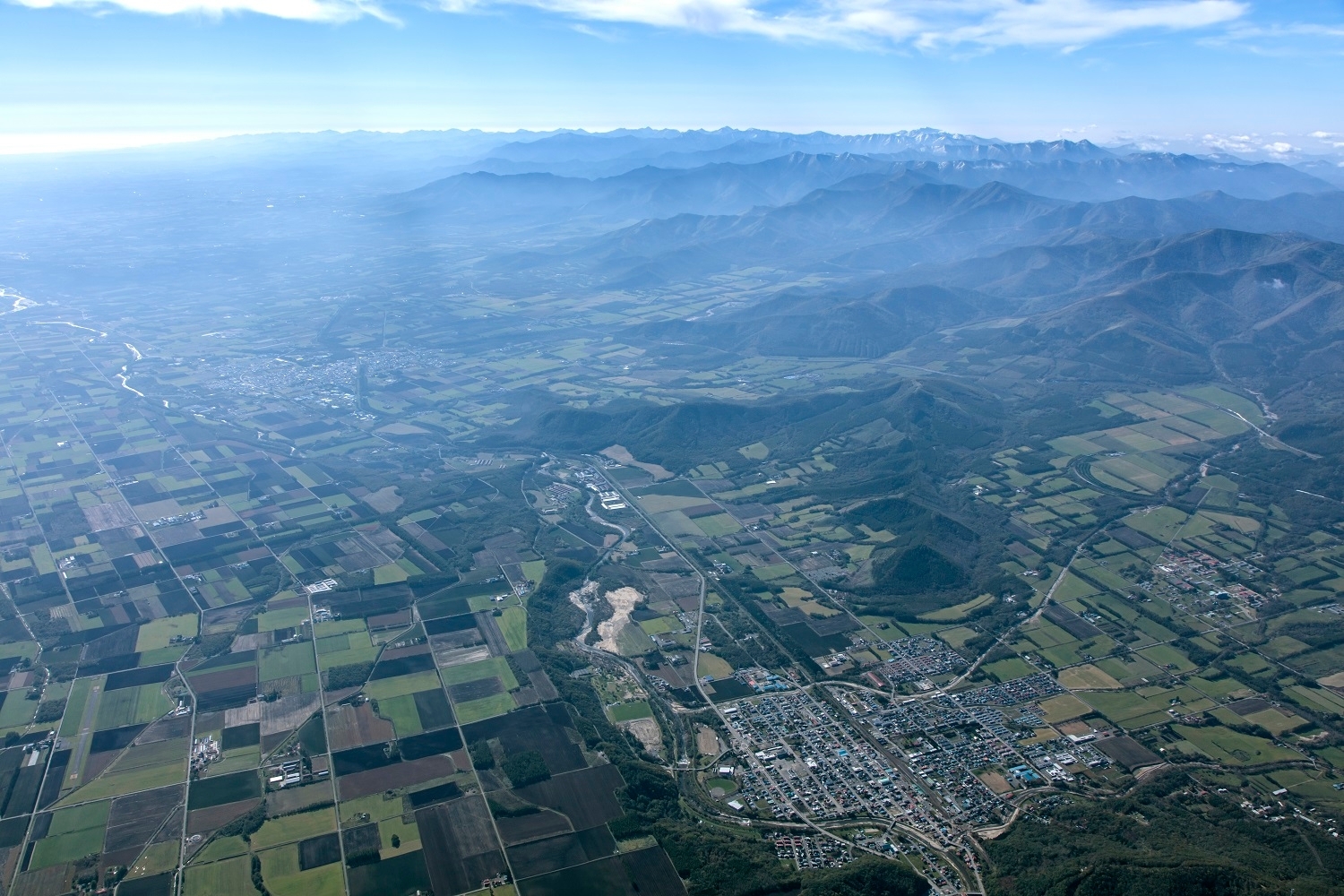
The Tokachi Plain and the Hidaka Mountains
Wild Animals and Plants, Ecosystems
This national park extends from the coast to the interior of Hokkaido, and because of the significant difference in elevation and its long north-south orientation, it has a diverse environment and is rich in biodiversity. Alpine vegetation flourishes along the main ridges, especially around the cirques formations, creating expansive flower meadows with various alpine plants. Due to the mountains’ ancient history and their unique topography and geology, alpine flora species such as like the Hidakagenge (Oxytropis revoluta) and Hidaka-kimbaiso (Trollius citrinus)are only seen here. Although slightly off the main ridge, Mt. Apoi (810m) is home to many endemic species and rare species with isolated distributions such as Hidakaso (Callianthemum miyabeanum) and Ezokouzorina (Hypochaeris crepidioides) .
At the foot of the mountains, a vast natural forest spreads out, dominated by a mixture of deciduous broad-leaved trees and sub-boreal conifers. In the northern part of the area,sub-boreal coniferous forests, mainly consisting of Ezomatsu (Picea jezoensis) and Todomatsu (Abies sachalinensis), extend along the Saru River. This area is designated as a national natural monument called the Saru River Headwaters Primeval Forest. In the west side, a cool-temperate deciduous, broad-leaved forest spread, containing Mitsude-kaede (Acer cissifolium) and Akashide (Carpinus laxiflora), which are rare in Hokkaido. The peridotite zone around Mt. Apoi is also home to the forests of Kitagoyo (Pinus parviflora) and Akaezomatsu (Picea glehnii) . The Hidakamitsuba-tsutsuji (Rhododendron dilatatum var. boreale), endemic to the Hidaka region, also grows at the foot of the mountains.
Upstream rocky areas of the river host unique plants such as Yashazenmai (Osmunda lancea), Ezotouuchiso (Sanguisorba japonensis), Sorachikozakura (Primula sorachiana), Risshiri-shinobu (Cryptogramma crispa), and clumps of Keshou-yanagi (Salix arbutifolia) grow along the river-banks downstream. On the southern coastal cliffs, in addition to the hidakamisebaya (Hylotelephium cauticola), there is a mixture of rare plants such as the sub-boreal species Kohamagiku (Chrysanthemum yezoense) and Chishimakinbai (Potentilla fragiformis subsp. megalantha) and temperate species such as Kikyo (Platycodon grandiflorus).
At the foot of the mountains, a vast natural forest spreads out, dominated by a mixture of deciduous broad-leaved trees and sub-boreal conifers. In the northern part of the area,sub-boreal coniferous forests, mainly consisting of Ezomatsu (Picea jezoensis) and Todomatsu (Abies sachalinensis), extend along the Saru River. This area is designated as a national natural monument called the Saru River Headwaters Primeval Forest. In the west side, a cool-temperate deciduous, broad-leaved forest spread, containing Mitsude-kaede (Acer cissifolium) and Akashide (Carpinus laxiflora), which are rare in Hokkaido. The peridotite zone around Mt. Apoi is also home to the forests of Kitagoyo (Pinus parviflora) and Akaezomatsu (Picea glehnii) . The Hidakamitsuba-tsutsuji (Rhododendron dilatatum var. boreale), endemic to the Hidaka region, also grows at the foot of the mountains.
Upstream rocky areas of the river host unique plants such as Yashazenmai (Osmunda lancea), Ezotouuchiso (Sanguisorba japonensis), Sorachikozakura (Primula sorachiana), Risshiri-shinobu (Cryptogramma crispa), and clumps of Keshou-yanagi (Salix arbutifolia) grow along the river-banks downstream. On the southern coastal cliffs, in addition to the hidakamisebaya (Hylotelephium cauticola), there is a mixture of rare plants such as the sub-boreal species Kohamagiku (Chrysanthemum yezoense) and Chishimakinbai (Potentilla fragiformis subsp. megalantha) and temperate species such as Kikyo (Platycodon grandiflorus).
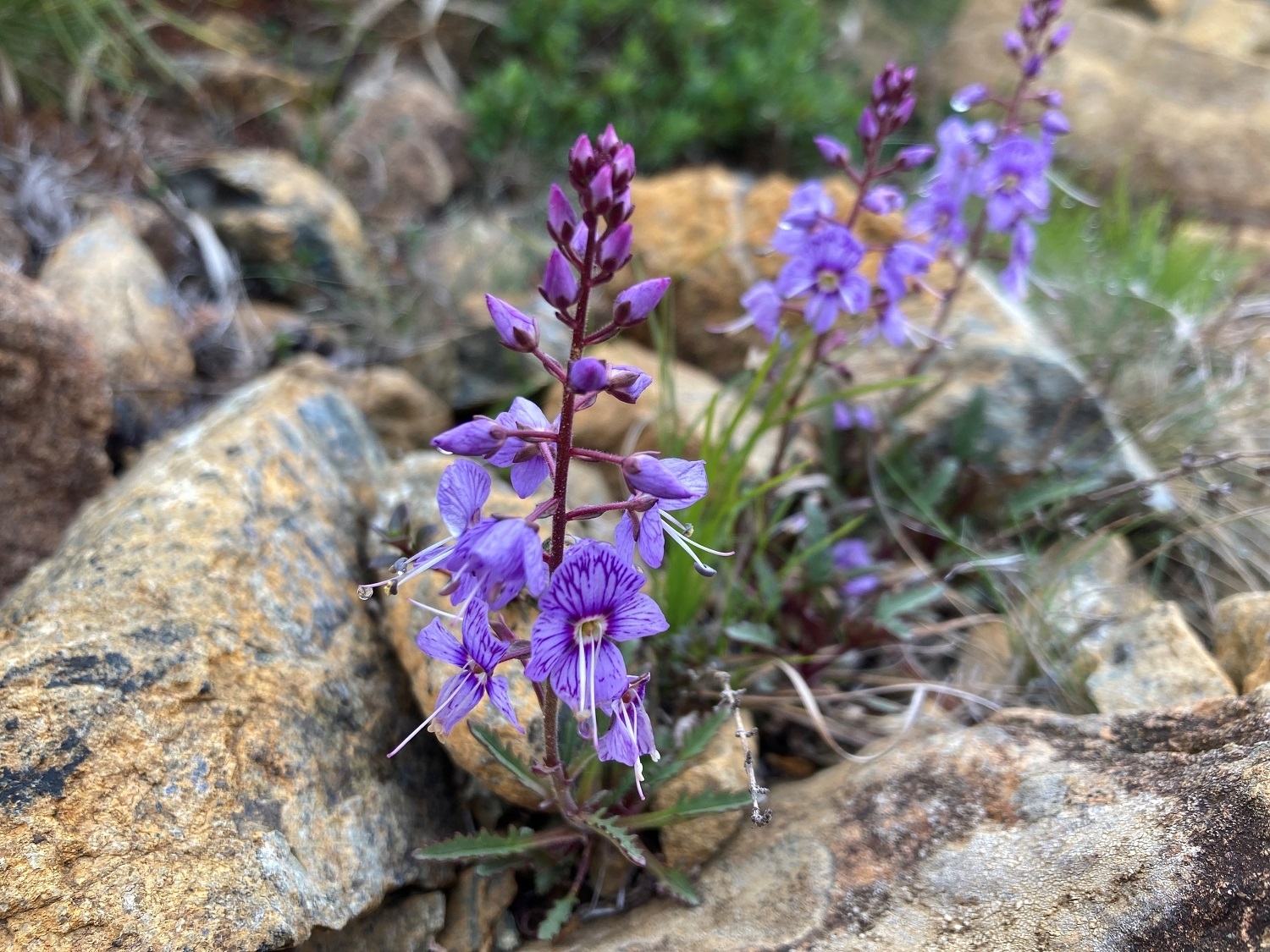
Veronica schmidtiana
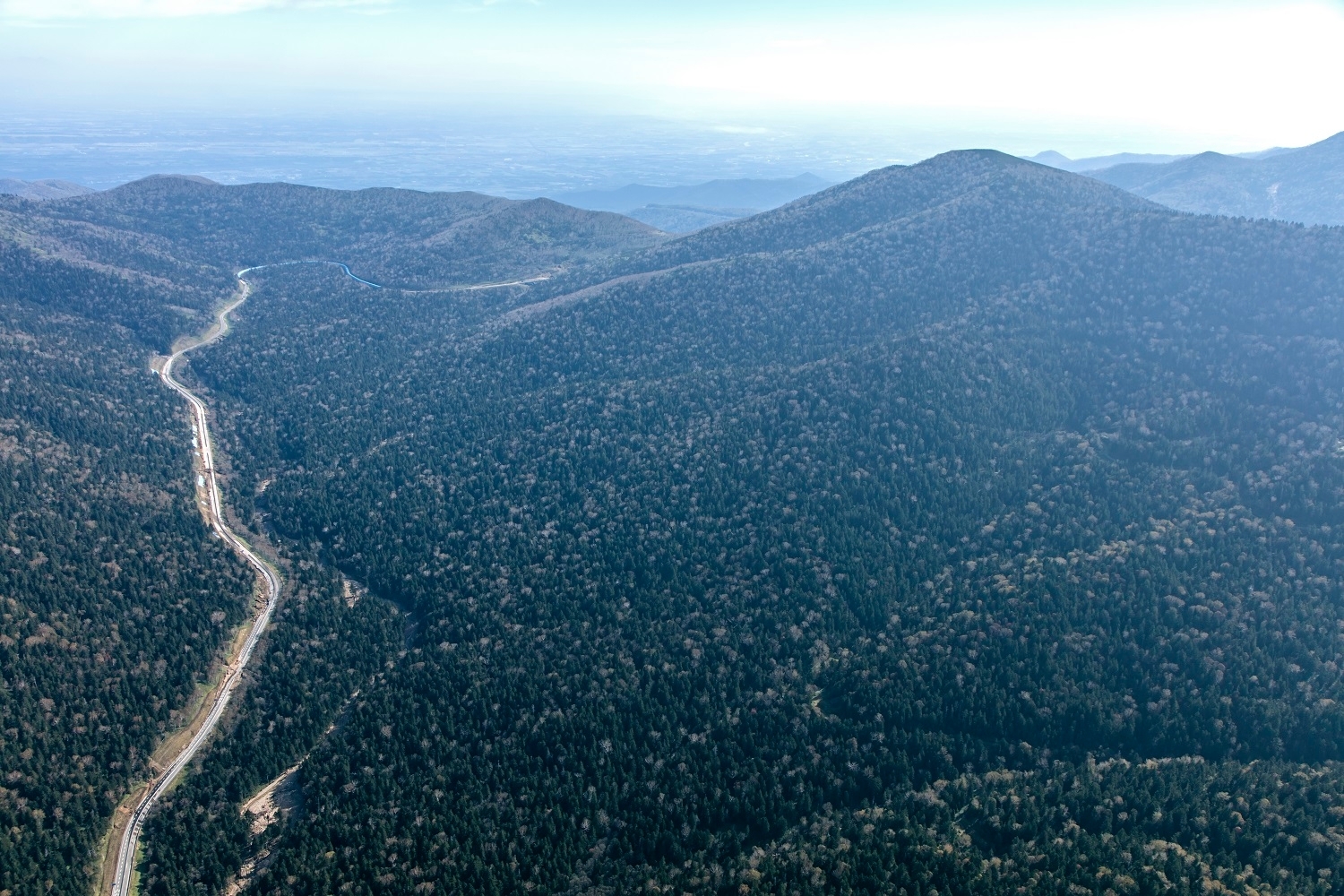
the Saru River Headwaters Primeval Forest
The fauna is also diverse, with many large mammals such as brown bears (Ursus arctos yesoensis) and Ezo sika (Cervus nippon yesoensis) living mainly at the foot of the mountains. The Ezo Nakiusagi (Ochotona hyperborea), which is said to be a species remnant of the Ice Age, is also found at lower altitudes in the southern part of the Hidaka Mountains. The coast near Cape Erimo is home to marine mammals, such as harbor seals (Phoca vitulina), symbolizing the richness of the sea. The undisturbed natural forests and rivers are home to apex predators such as Blakiston’s fish owl (Bubo blakistoni) and mountain hawk-eagle (Nisaetus nipalensis). Other inhabitants include the Himechamadaraseseri (Pyrgus malvae), a butterfly, which live only on Mt. Apoi in Japan, the endemic Apoimaimai (Paraegista apoiensis), a snail, and Chibigomushi (Trechinae spp), a rare species of beetle.
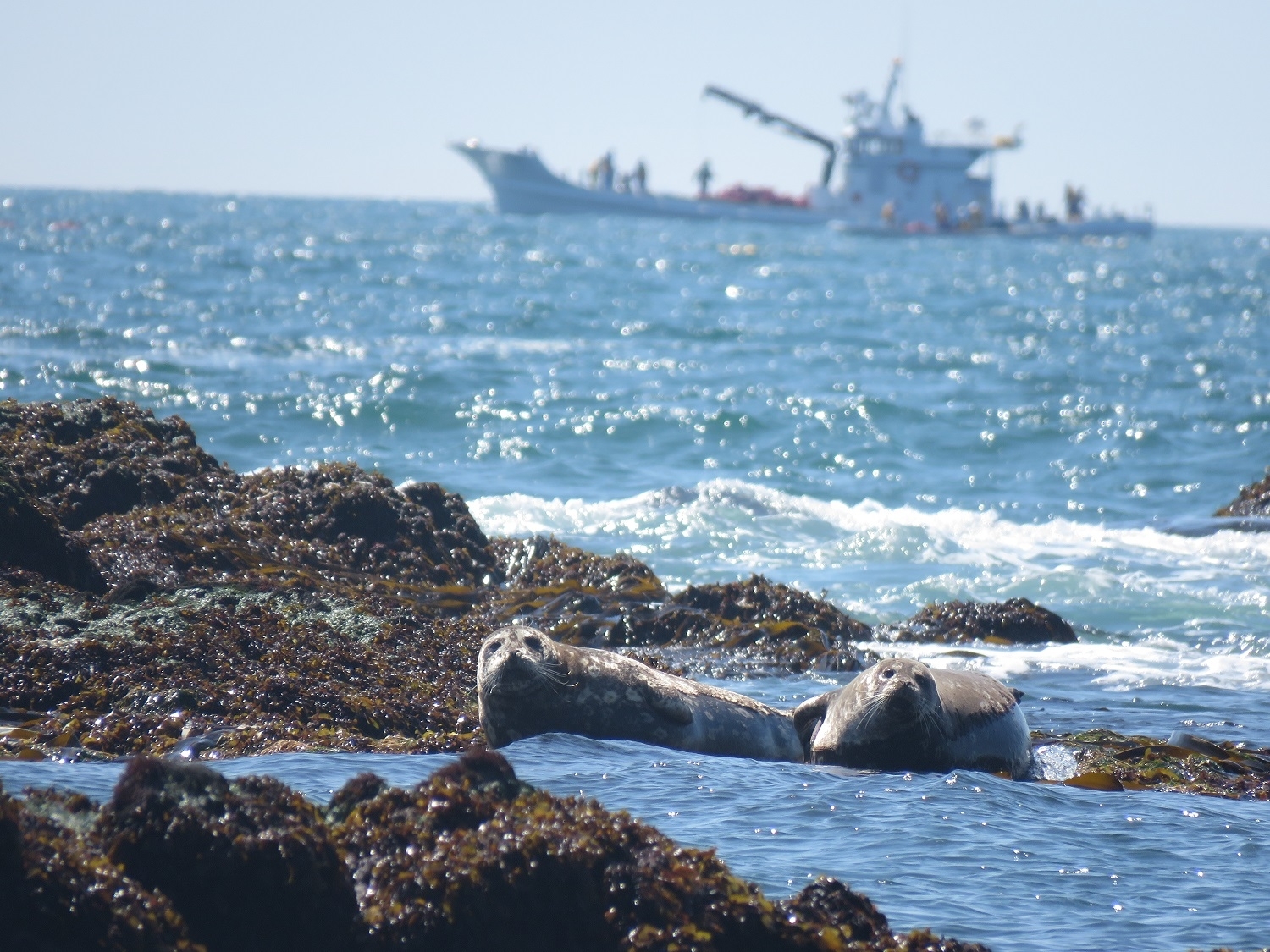
Harbor seal
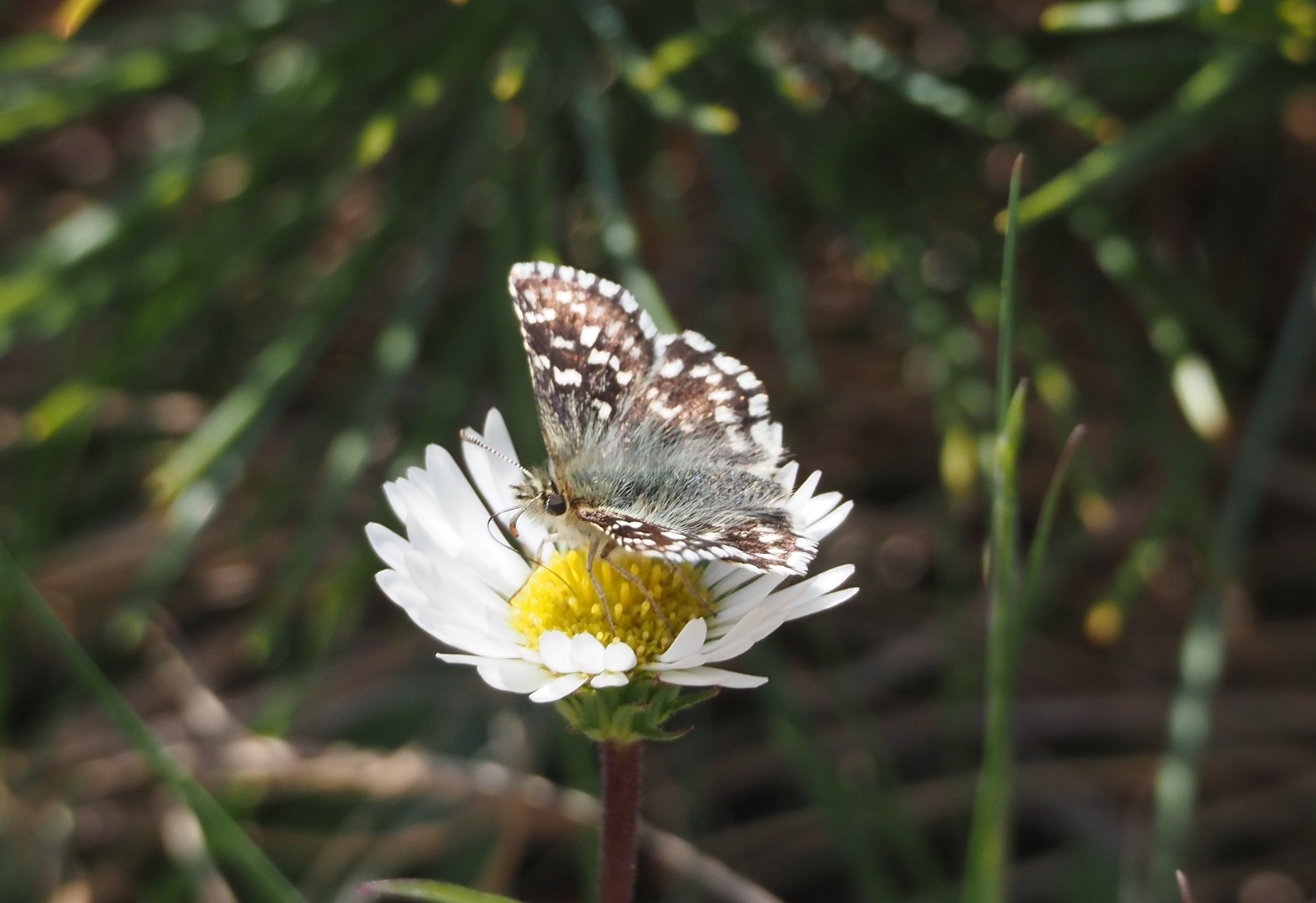
Grizzled skipper
Culture and History
The Ainu people have lived in the foothills of the Hidaka Mountains since much before the arrival of Japanese settlers in the Edo period (1603-1868). In particular, the Nibutani area, located in the middle reaches of the Saru River, is one of the most important centers of Ainu culture in Hokkaido. For the Ainu people, the Hidaka Mountains and Cape Erimo, including the sacred Mt. Poroshiri, have been important or precious places for prayer and worship. The Saru River, which originates from Mt. Poroshiri, is the largest in the Hidaka region, connecting the Hidaka Mountains to the Pacific Ocean, and has brought blessings to the Ainu people. Mt. Apoi and the unique rock formations of Cape Enrumu in southern Hidaka have inspired folk tales and legends.
The blessings of the Hidaka Mountains are celebrated in events like the” Jukon Festival (souls of roots) ”, which is held to pray for to the trees that are a product of the rich forests and to worship the spirits of the trees themselves. In addition, kelp and sea urchin harvesting are thriving because Mitsuishi-konbu (Hidaka kelp), a local specialty, grows abundantly in the coastal reef zone, and the sight of the fishermen at work is a summer tradition.
The blessings of the Hidaka Mountains are celebrated in events like the” Jukon Festival (souls of roots) ”, which is held to pray for to the trees that are a product of the rich forests and to worship the spirits of the trees themselves. In addition, kelp and sea urchin harvesting are thriving because Mitsuishi-konbu (Hidaka kelp), a local specialty, grows abundantly in the coastal reef zone, and the sight of the fishermen at work is a summer tradition.

